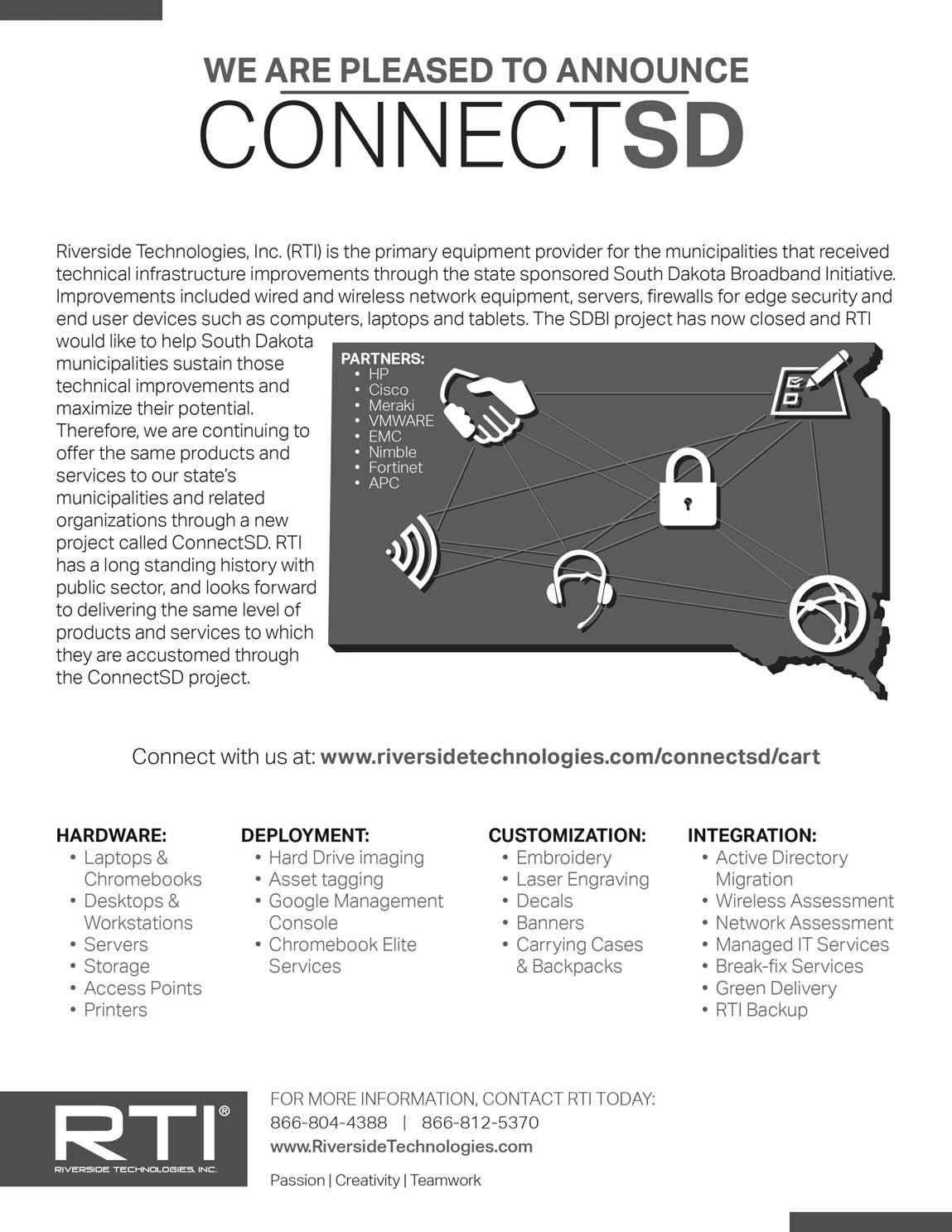
6 minute read
Engaging Residents as Volunteers
Change is happening in every aspect of community life. Our cities and towns are forming from new populations expressing needs and desires that are reshaping the landscape of what it means to be a great place to live. Beyond the melting pot of cultures that continues to sculpt this country is the generational influence of the Baby Boomers and Millennials, as well as a growing population of persons with disabilities. Needs and desires may be overwhelming. Capacity may be stretched. Voices may be lost.
Engaging residents in service — whether governance, planning, or direct service — is worth considering because residents bring perspective, resources, and skills. Engaging volunteers expands your capacity to achieve goals. The following are some best practices to incorporate when starting a volunteer program for a city or town.
Advertisement
Define the Culture
Lay the foundation by defining your volunteer culture. Begin with a positive vision, clearly articulated, widely shared, and openly discussed throughout the municipality about the role of volunteers. It is essential that each agency and its staff have an overall appreciation of volunteers. Volunteers must be seen as valuable human capital that can contribute directly to the municipality’s goals.
To get started, ask these questions, and dream big: j What do you want to do that you do not have the resources to do now? j What are you doing well that you would like to replicate in more areas? j What perspectives are needed to plan and develop a project? j What impact areas are priorities? Preparedness and safety? Homelessness and hunger? Neighborhood revitalization? j How can volunteers provide input, resources, and energy?
Here are some examples of what other cities and towns have done to provide some inspiration (from citiesofservice.org): j Atlanta, Ga., created a Recycling Corps of 228 volunteers whose training and outreach efforts increased household recycling by 17 percent in 3,747 households over one year.

j Birmingham, Ala., implemented a Love Your Block campaign as part of a neighborhood revitalization project. The result was an 11 percent reduction of crime in 16 neighborhoods. j Orlando, Fla., engaged more than 2,000 volunteers to serve 6,310 youths in 23 schools. More than 90 percent of the students in this program have had no school suspensions and have had no problems with law enforcement. j Phoenix, Ariz., brought together volunteers to convert dormant land in low-income housing complexes into gardens from which approximately 1,400 pounds of fresh produce was harvested and distributed to 200 local families, who also received nutrition education from the local hospital.
Leadership and Management
Combine inspiring leadership with effective management by ensuring leaders at all levels are involved in the development of the volunteer program. More than a slogan, a volunteer program needs leaders to model and managers to execute. Success breeds success. Here are tips: j Ensure municipal leaders, managers, and volunteers are engaged together at every level, including policymaking, and executive and middle management work, as well as direct service. Walk the talk. j Provide managers with the training and resources to implement the program. While many staff members may have volunteered before, having volunteer management duties newly assigned may be outside their skill set. Devote a day to training current employees, and include volunteer training as part of the orientation for new employees. j Appoint an advisory committee, which can help keep track of a timeline and ensure a program that will resonate with volunteers. Be sure advisory committee members understand that their role is to advise and assist, and policy decisions are subject to approval. j Invest in the volunteer program. Volunteer programs need resources. Volunteers need someone to direct the work and provide tools to do their jobs. Consider becoming a service enterprise, which is an organization that leverages volunteers and their skills across all levels of the organization to successfully deliver on its social mission. Research studies done through the Points of Light Institute by the TCC Group and Deloitte indicate that organizations operating as a service enterprise will operate at half the median budget of peer organizations. Funds saved can be used to deliver more services. j Expect some barriers you will need to overcome, such as:

j Liability. Clear policies (including a release of liability), safety training, and background checks are needed. j Confidentiality. Clearly noted and agreements signed when appropriate. j Hours of operation. Staff may need to be scheduled differently, or empower a volunteer. j Attitudes. Some staff may be concerned about being replaced. Staff should never be replaced by a volunteer — both are part of the success equation. Make a conscious effort to increase the teamwork between paid staff and volunteers. Define the responsibilities and authorities for each. j Start small. Consider a pilot program in one agency to provide the opportunity to learn, grow, and adapt to the newly established volunteer culture. In designing the volunteer program, include these basic steps: j Write a vision and purpose statement: What are you doing and why? j Conduct a needs assessment: Identify what needs to be done, by when, and with what resources. j Write a project description: Describe the project, what the volunteer will do, what items are needed, what skills are needed, and the impact the project will have on the community. j Recruit your volunteers: j Define who the target audience is. Consider populations necessary for success. j Create a communication plan using websites, newsletters, online matching databases, word of mouth, libraries, fairs and/or festivals to reach those individuals. j Craft a powerful message. Sell the benefits. j Manage the sign-up and tracking of volunteer work. What was accomplished, for whom, and with what outcomes? j Recognize all partners, stakeholders, staff, volunteers, and community leaders. Thank them in a meaningful way. j Celebrate success! Tell your story. Invite others to join the work.
Partnerships
You are not in this alone. You do not have to possess all the volunteer engagement knowledge, tools, and technology. The greatest impact, best use of resources, and most sustainable outcomes occur when all stakeholders are aligned. j A volunteer center is a great place to begin. Volunteer centers will have the training and tools necessary — they may even have a volunteer project-matching database to post opportunities and manage the people who sign up. Volunteer centers can help recruit volunteers. They connect thousands of volunteer to projects. Use their network and communication systems. j Nonprofit agencies that work directly in the specific impact area have the staff, volunteers, tools, and content knowledge needed. They may be able to provide team leaders who can organize large groups of volunteers. Additionally, they have newsletters and websites to share the municipal story. j Local businesses, large and small, care, and many times invest in local initiatives. It is good for business.
In-kind services and products will extend your budget.
No matter the challenge to be solved, whether it is transportation, gentrification of neighborhoods, safety, or serving the most vulnerable populations, volunteers can be a vital, unlimited resource. Taking time to plan a volunteer program will generate thoughtful conversation, an opportunity to listen and learn, and invite all to participate.
For more information, visit citiesofservice.org, pointsoflight.org, and metrovolunteers.org.
This article first appeared in the December 2015 issue of Colorado Municipalities. Used by permission of the Colorado Municipal League.












